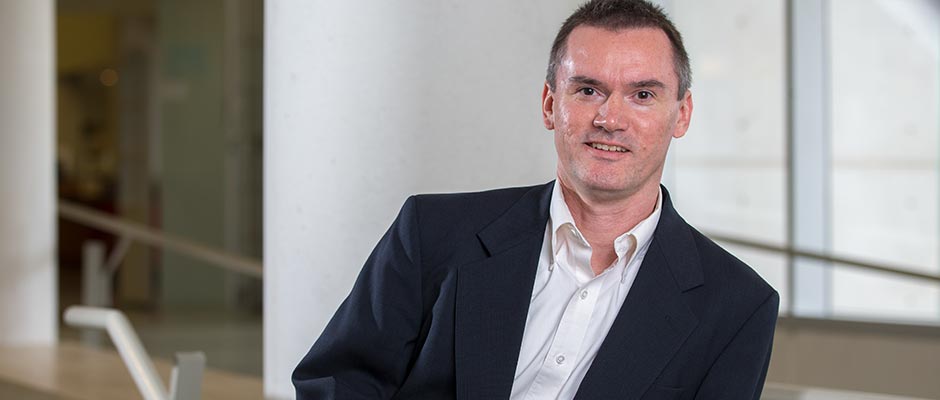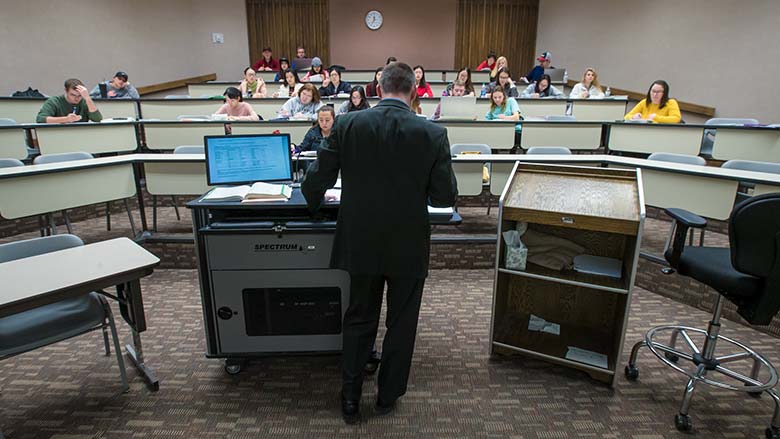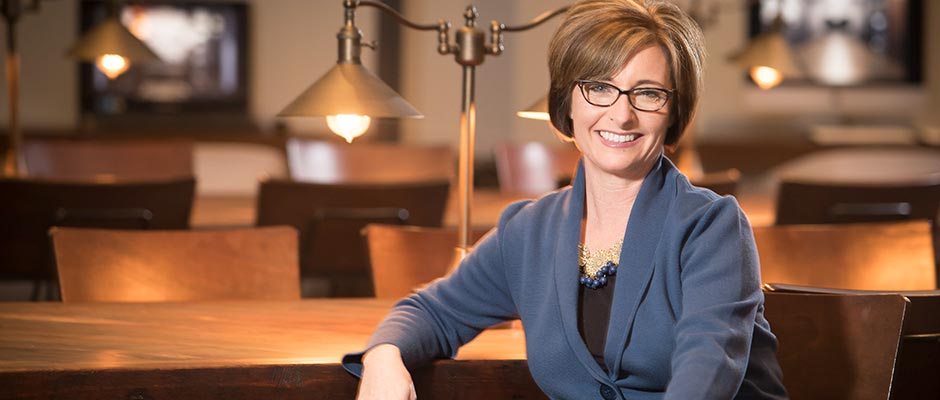Archive for February, 2017

Do recent regulations help the banking industry reduce risk?
Analyzing a portion of a federal financial law
In 2010, the Dodd-Frank Wall Street Reform and Consumer Protection Act was signed into federal law in response to the meltdown of ’08.
Many people involved in creating that legislation looked at how companies were controlled.
“Corporate governance was under the microscope at financial institutions,” Hines said. “People wondered if one of the main reasons something went wrong was related to the way boards were functioning.”
As part of Dodd-Frank, publicly traded banks that met a list of criteria, including holding $10 billion or more in assets, were required to create a board-level “risk committee” that included independent directors.
In business terms, “risk” is any threat to profits and assets. Assets may range from cash to consumer data, intellectual property to land or equipment. For banks, assets primarily consist of loans.
Threats to assets vary, but include financial downturns, security breaches, lawsuits, accidents, natural disasters and human error.
Risk committees try to help companies identify, analyze and change any factors that could harm profitability and assets.
Hines’ research focus since 2012 has been to examine the short-term outcomes of adopting these committees.
“In my PhD dissertation, I looked at financial institutions that voluntarily formed a risk committee at their board level.”
He wanted to see if profitability and risk measures were better or worse about a year or two after the company formed the committee.

Photo by Kevin White
Becoming one of the first to examine this topic
Since Dodd-Frank was so new, Hines’ work broke fresh ground.
He has looked at several issues surrounding risk committees, including how having a committee affects auditors’ perceptions.
He and co-authors have published in peer-reviewed journals including the Journal of Accounting and Public Policy as well as Auditing: A Journal of Practice & Theory.
Dr. Adi Masli, a University of Kansas assistant professor who met Hines in the PhD program at the University of Arkansas, was a co-author on one paper.
“He provides great insights, and is knowledgeable about this field of research,” Masli said. “We hope to work together again on future projects.”

Photo by Kevin White
Reporting some findings, need for more research
So far, Hines said, “there really isn’t a whole lot of strong evidence that forming the risk committees affected banks’ risk or profitability in the short-term. However, there is evidence that risk committees, and the specific way they are structured, do affect auditor perceptions in the short-term. I think more research needs to be done to say anything about the long-term.”
However, “not all risk committees are created equal.”
The people who sit on the board (i.e., whether they have a large stake in the company or are more independent, and whether they have risk expertise), the questions the board asks, the ways the board reports findings and more could make a committee more or less effective.
Some industry experts, he said, contend that risk oversight should really be the responsibility of a company’s full board, even if the company has a specific risk committee.
“Researchers had not focused on risk committees in the past, so there wasn’t a lot of background for me to incorporate.” — Dr. Christopher Hines

Photo by Kevin White
Potentially contributing to new public policy
Dodd-Frank is likely to be re-examined in Washington, D.C., since new U.S. President Donald Trump has said he would like to dismantle it.
Hines holds a College of Business Endowed Research Professorship, so it’s probable he will be doing more analysis of this topic. It’s possible that his current and future work could be used by lawmakers who hope to learn about best practices as they craft public policy.
His new research will be conducted from his alma mater: He is a 1994 and 2001 Missouri State alumnus, and has worked here since 2013.
“There’s a very collegial atmosphere and supportive environment in the College of Business. Missouri State is a great place to enjoy all aspects of being a professor.”
- Story by Michelle Rose
- Main photo by Jesse Scheve

Five-star service starts with a better curriculum
“When I told him I was coming back to teach at Missouri State, he said to make sure that the students understand what the industry is really about, because it is a challenging industry,” said Hein.
Hein took this advice to heart and early on was interested in how to improve her own teaching and abilities in the classroom. In 2008, she began developing a program review process with her colleagues.
Improving service through industry

Photo by Kevin White
In her article, “A Systematic Model for Program Evaluation and Curricular Transformation: A Tale from the Trenches,” Hein and her colleague, the late Carl Riegel, former professor, aimed to eliminate one of the biggest issues many programs face: curricular review.
“In the article, we discuss how we went about reviewing the program and implementing changes for improvement,” said Hein. “We also wanted to tie together what we thought was important to the curriculum with insight from industry. We felt industry input was an important piece of the process.”
“You have to be nimble to some extent and really pay attention to the demands. When I first started teaching, we had a heavy interest in support from the restaurant industry. That’s where a lot of our students went. Now, it’s shifted and it’s the servicing and lodging industry. You have to make sure that you know what’s going on in all these different segments.” — Dr. Stephanie Hein
The pair surveyed industry partners across the nation, totaling nearly 150 respondents. Their survey results provided a wealth of information that led to several more articles.
“We focused on what industry thought was important in the curriculum. There is a core body of knowledge that is commonly taught in hospitality programs across the country. We wanted to know the value industry placed on each content area that makes up that core,” said Hein. “That really is what spurred the process — making sure that what we are teaching in the classroom is relevant to what industry needs.”
They discovered that industry had five main areas of concern when hiring new employees: communication skills, ethical considerations, financial management, organizational/management theory and management of hospitality operations. Special attention was granted to these areas as the curriculum was reviewed and reworked, with an emphasis on communication, ethics and financial management.
Working together to build something better
After the article was published, the response was overwhelmingly positive. To date, it has been downloaded nearly 650 times and her presentations on the article often pack the house. It is setting the standard.
“There’s a need within academia to provide a systematic process for program review and development,” said Hein. “Because of my evaluation experience, I am often called upon to assist with external program reviews and accreditation visits at other universities. When I do an external evaluation, I focus on whether or not the program being evaluated is meeting the standards of what should be included in the curriculum, and often use our model as a guide.”
“There is this need and this curiosity of how to work this review process. I’ve given a lot of presentations at academic conferences and panel discussions, and sometimes you go in and there’s a few people in the room. With the piece on the program review, the room was packed, and we had so many people afterwards asking about this process.” — Dr. Stephanie Hein
The model has since been used to guide the hospitality leadership program itself and ensure students are receiving the highest-quality education possible. Hein believes this is reflected in the newly renovated Pummill Hall where the department is housed.
From the selection of the architects, to the design of the facility, to move in and opening day, Hein was there every step of the way and served as the project’s point person.
“The nature of the courses we teach required a more hands-on approach when it came to designing the facility,” said Hein. “I wanted to make sure the building appealed to our students. To ensure their input was captured, I held multiple focus groups to learn what was important to them.”
Collaboration was the cornerstone on which the renovations were built, and they were driven by three essential concepts that Hein kept in mind during the entire process: establish a positive learning environment, create a collaborative learning environment and enable students to be a partner in the teaching process.
“While the department made do with the resources they had previously, the newly renovated space is essential to the growth of the program,” said Kara Edwards, a student who assisted in crowdfunding efforts for the building renovations. “Students are now set up for success with not only the advanced technology, but also the space they are provided with. It was a truly rewarding experience to be a part of the crowdfunding efforts, and to see the difference it has already made in the quality of education the hospitality program is able to provide.”
All three components are reflected in the building: a stimulating color palette throughout the building creates a positive learning environment, tables instead of desks promote collaborative learning, and students being able to voice their wants and needs about the new renovations allowed them be a part of the teaching process.
“We knew we created a strong curriculum when we went through the program evaluation and transformation process. The facility now mirrors this quality and closes the loop,” said Hein. “With that being said, we are continually working to improve because if we don’t we will become obsolete. We will continue to make adjustments to ensure we are meeting both our students’ and industry’s needs.”
Hein continues to work on improving curriculum; she was recently appointed to the Accreditation Commission for Programs in Hospitality Administration (ACPHA).
According to Hein, “The commission gives the final review and approval when programs go up for either initial accreditation or re-accreditation.”
- Story by Shay Stowell
- Main photo by Kevin White

